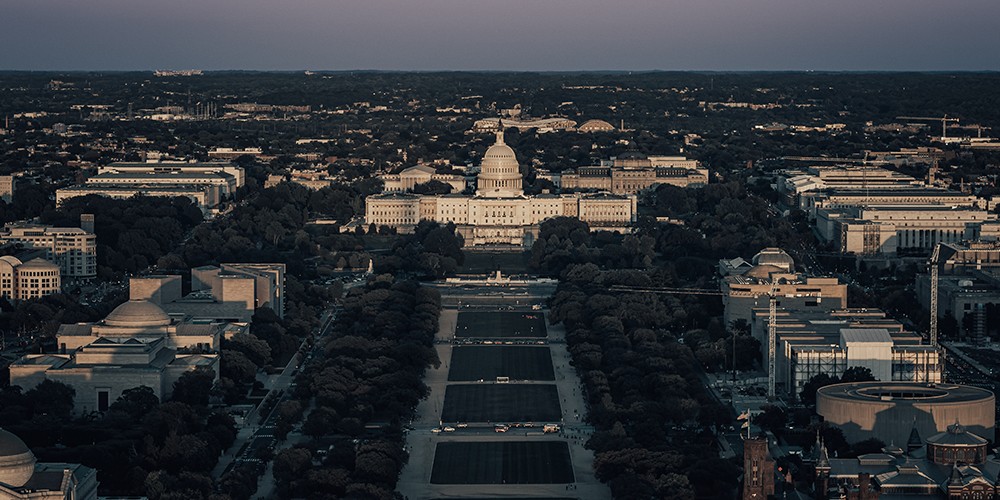The race for the White House is entering its final phase. The conventions have come to a close, and the pivotal presidential debates are weeks away.
On balance, it looks like the Republican national convention swayed more voters. Democratic nominee Joe Biden failed to get the traditional convention bounce, whereas President Donald Trump has gained ground and narrowed his opponent’s lead.
The average of national polls by Real Clear Politics showed Biden’s lead at 6.2 points at the end of August, compared to around eight points during the Democratic national convention. Polls for Biden declined following the convention, as he dipped below 50 again. Trump edged up to 43.4 by 31 August, from around 42 ahead of the conventions, and 40.1 in mid-July.
Covid-19 forced both Democrats and Republicans to conduct an experiment with their nominating conventions.
The Democrats opted to go for an almost exclusively recorded presentation, with only a live celebrity hostess to leaven the proceedings. The Republicans went for a mix of live and recorded, with most of the live speeches in an empty auditorium near the White House.
The virtual conventions lacked all the noisy, messy democracy of the traditional rowdy crowds in a huge auditorium. These gatherings normally are the place to energise party loyalists, donors and supporters, and it remains to be seen how missing that will impact the election.
More significant than the national polling average are changes in voter sentiment in the ‘swing states’ – those that are not firmly in one camp or the other for the electoral college vote, which is what determines the winner. Any shift in voting blocs could swing the state vote one way or the other.
In this regard, a Hill-HarrisX poll conducted during the RNC showed a substantial increase in support for Trump among black voters, registering at 24%, a gain of nine points from 15% in the poll conducted earlier in August. This could make the difference in states like Pennsylvania and Michigan with large urban black populations. The support from Hispanic voters rose to 32% from 30% between the two polls.
The RCP averages for the battleground states of Wisconsin, North Carolina, Florida, Pennsylvania, Michigan and Arizona show a clear trend with Biden declining and Trump gaining, narrowing the gap in those six states to 2.7 points.
At their convention, the Democrats portrayed Biden as kind and empathetic, but the real focus was to make the election a referendum on Trump. Most of the speeches painted a dark future for the country if he is re-elected.
The Republicans were at pains to show Trump is not the ogre he is made out to be. They provided a more upbeat picture on how his policies have benefited people and will continue to do so if he is re-elected.
In the wake of the conventions, however, it is the protests over racism and police behaviour that are dominating the news and apparently swaying opinion. While most of the protests are peaceful, they have been accompanied in some places by violence, arson and looting.
Both candidates are trying to frame the debate over this issue. Democrats are decrying institutionalised racism, police brutality and the lack of social cohesion under Trump. Republicans are emphasising security and safety guaranteed by strict observance of law and order.
The polling trends indicate the president is doing a better job of it. Videos of burning buildings and violent clashes are helping him. They are much more visible than the spread of Covid-19, which Democrats blame on Trump’s incompetent handling of the pandemic.
The dilemma for Biden and the Democrats is reconciling the traditional centrism represented by Biden with the party’s left wing, represented most clearly by Bernie Sanders.
This year, as in 2016, the Vermont senator came close to securing the Democratic nomination. He has since leveraged his voter support to bring many of his policy prescriptions into the Democratic party platform.
The result is a set of proposals that will have trouble commanding a majority in the American public. It falls short of what many progressives want, while providing fodder for Republicans to portray Biden as a centrist Trojan horse smuggling in a radical agenda.
Biden must find a response to this cleft in the party by the time he faces Trump in the three presidential debates.
These encounters between the two candidates will be the main event, and perhaps the decisive one, in this election. The unscripted bouts test the mettle of the candidates in a way no campaign presentation or teleprompter speech can match.
There are three debates scheduled – 29 September, 15 October and 22 October. The debate between the vice-presidential nominees, Pence and Kamala Harris, will be 7 October.
This year’s campaign is particularly combustive in the country’s hyper-partisan atmosphere. Any number of black swan events could shift it in one direction or the other. The race looked completely different before the onset of Covid-19 and the ensuing lockdown. The death of African American George Floyd in police custody shifted the campaign again.
In the end, however, it may come down once more to the economy, stupid. The path of recovery in the US will tilt the election.
Darrell Delamaide is US Editor of OMFIF.
